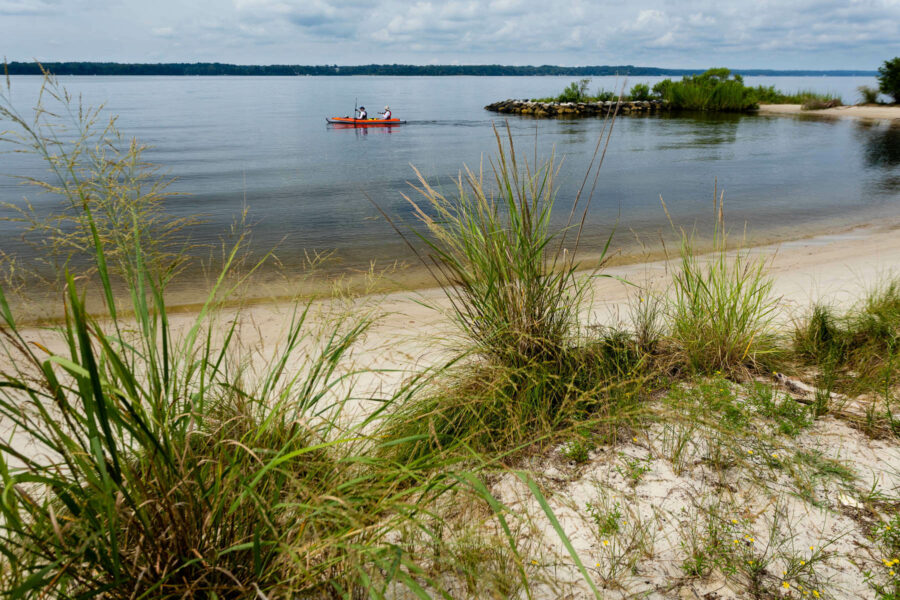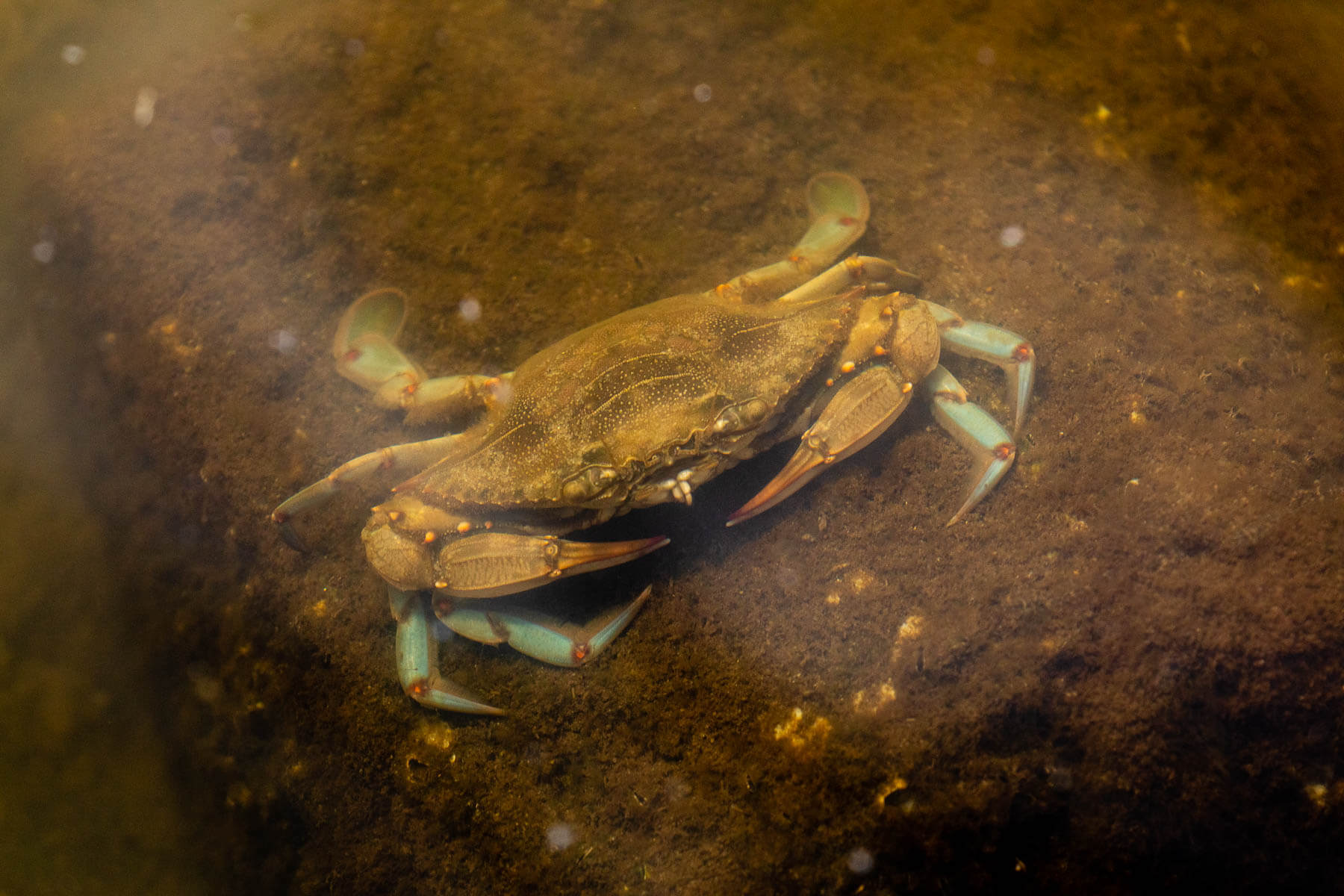A living shoreline welcomes wildlife and wanderers

In mid-July, a lone female diamondback terrapin emerged from the calm tidal water of the Patuxent River, crawled past bunches of beach grass and laid eggs in the sand. Nesting terrapins are a rare sight for Maryland’s Western Shore, where waterfront property is more commonly armored with bulkheads and piles of large stone, known as riprap, that eliminate habitat both on land and in the water. By 2100, a third of shorelines in the United States will be hardened in one form or another, threatening biodiversity in the Chesapeake and beyond.
But at the southern end of Jefferson Patterson Park in Calvert County, man-made breakwaters allow a gentle sandy slope to entice the terrapin and other creatures. Known as a “living shoreline,” it is a form of green infrastructure that restores relatively undisturbed habitat for plants and animals while improving the health of the water.

The benefits of a living shoreline extend to people as well. Amid blue crabs resting in the shallow water on a sunny August afternoon, a couple prepared their kayak for easy entry into the river. A naturally sloped shoreline absorbs wave energy instead of reflecting it back into the water, which allows paddlers to launch their vessels without being jostled just as juvenile fish can find refuge in the gentle shallows. And although shorelines are typically hardened to reduce erosion and flooding, in a large storm, living shorelines can actually be more resilient than a bulkhead.
Landowners who are looking to stabilize their shoreline can consider natural means that also combat climate change. Marshes naturally absorb waves while also providing habitat and sequestering carbon. Sediment trapped in marshes adds to landmass that might otherwise erode, allowing the shoreline to rise in elevation and combat sea level rise. And when an oyster reef is used in a living shoreline project to dampen waves, the living reef can similarly rise from the depths as new oysters attach and grow.
There are many kinds of living shorelines, and several types are demonstrated at Jefferson Patterson Park. There, they protect a historic 560-acre property—one with roughly 9,000 years of human occupation—as well as the waters the park overlooks.

Comments
There are no comments.
Thank you!
Your comment has been received. Before it can be published, the comment will be reviewed by our team to ensure it adheres with our rules of engagement.
Back to recent stories